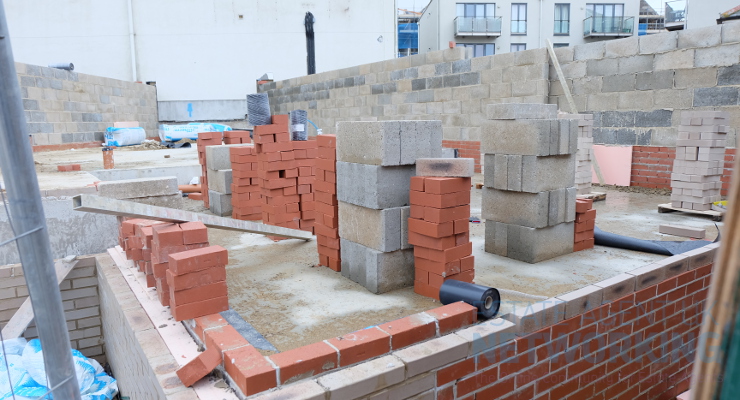Rightmove House Price Index – Regional price records defy Brexit uncertainty
Regional price records defy Brexit uncertainty
- Price of newly-marketed property increases by an average of 0.9% (+£2,841) this month, buoyed by the spring market and consistent with the previous two-year average of 1.0%
- Four out of eleven regions are bucking any Brexit blues and have set new asking price records for newly-marketed property:
- Prospective buyers in Wales, the West and East Midlands, and the North West are being confronted with all-time highs for the average price of property coming to market
- Upwards price pressure and positive sentiment in these regions overcoming hesitancy to come to market, with average number of new sellers in the year to date steady at -0.3% compared with same period in 2018
- In contrast the same comparison sees new listing numbers in the remaining seven regions down by an average of 6.5%
Overview
The price of newly-marketed property increases by an average of 0.9% (+£2,841) this month, buoyed as usual by the higher buyer demand associated with the more active spring market. What is surprising against the backdrop of Brexit uncertainty is that four out of eleven regions are showing few signs of any Brexit blues and have set new record highs for average asking prices.
Miles Shipside, Rightmove director and housing market analyst comments: “Price increases are the norm at this time of year, with only one fall in the last ten years, as new-to-the-market sellers’ price aspirations are under-pinned by the higher buyer demand that is a feature of the spring market. Indeed the 0.9% monthly rise is consistent with the previous two years’ average rise of 1.0% over the same period. What will seem inconsistent to some, given the ongoing uncertainty of the Brexit outcome, is that four out of eleven regions have hit record highs for new seller asking prices.”
Prospective buyers in Wales, the West and East Midlands, and the North West are being confronted with average prices of property coming to market at all-time highs. While the national rate of increase is virtually flat at +0.1% compared to a year ago, these regions have considerably higher prices than at this time last year, with Wales breaking through the £200,000 barrier for the first time. By contrast, London and its commuter belt (the South East and East of England regions) have seen year-on-year falls.
Shipside adds: “Buyers looking in Wales are faced with newly-marketed property prices that are 4.1% higher than 12 months ago, with the West Midlands at 3.0%, the East Midlands at 2.5%, and the North West at 2.1%. These increases are the result of a combination of strong demand, buyers’ affordability headroom, and a continuing shortage of suitable properties. Agents in these areas say that Brexit concerns are not really on the agenda of home-movers; they are more concerned with satisfying their housing needs.”
Compared to the rest of the UK, property owners in the regions which have reached new record prices seem to be overcoming hesitancy to come to market. Their average number of new sellers so far in 2019 is holding steady compared with last year, at just 0.3% down. In contrast the remaining seven regions are seeing new listing numbers for the year to date down by an average of 6.5% compared with the same period in 2018.
Shipside observes:”Activity breeds activity and a greater choice of fresh properties in these record-setting regions helps to spur buyers into action, especially if they have a property to sell. This in turn adds another new listing that might then tempt another buyer, in a virtuous circle. And in much of the rest of the country, despite the ongoing political uncertainty, agents are reporting that the lure of the right property at the right price still attracts good interest. In spite of some of the challenges in the market, interest in property remains very high. People’s ongoing desire to satisfy their pent-up housing needs means that on average someone contacts an agent on Rightmove every second.”
Agents’ views
Ian Marriott, director at FHP Living in West Bridgford in Nottinghamshire, said: “It’s a strong market in the East Midlands at the moment, things are looking up. There are less buyers out there at the moment, but the people who are in the market are doers rather than people who will mess you around. Sellers shouldn’t be disheartened if viewing figures are down because the quality of people who are interested in buying is better than before. I think people are just really bored of the whole Brexit debate. It feels like there is some kind of election every week and so the fear factor is perhaps subsiding, and people are just getting on with their lives. There may be 30% less people in our market, but the good news is that 70% of people still want to get on and move. We’re possibly less affected than the London and southern regions because, being further removed from the city, we have a slightly more stable market. Things don’t react as quickly here to the economy.”
Dafydd Spear, sales manager at Belvoir Swansea, added: “It’s great that Wales has broken that £200,000 barrier and I think it’s because there’s not so much Brexit doom and gloom here. In terms of what’s happening in Swansea, we’re seeing lots of investment in the city centre which is really driving things and boosting the whole area, and of course we’re all still waiting to see whether the Tidal Lagoon eventually gets the green light. But we’re a very buoyant market. People still need to buy, and people still need to sell and over the last 12 months it’s been all system go really. We’ve been seeing a few cheeky offers, but by and large we’re getting houses sold at very close to their asking prices, and in some cases, exceeding them.”








